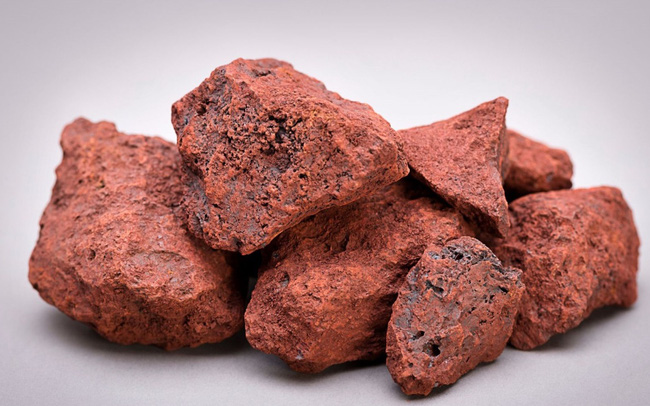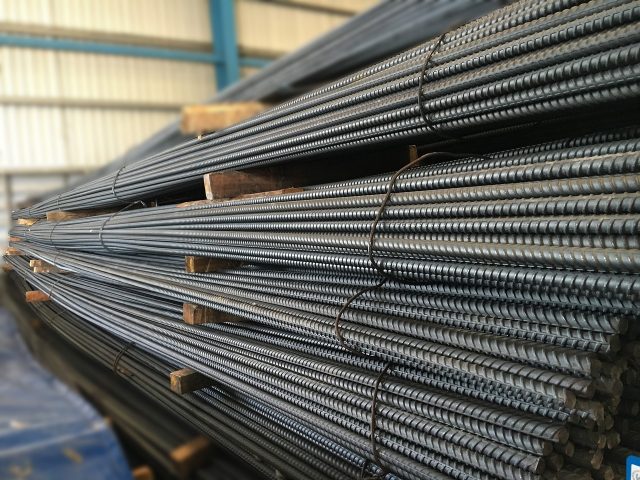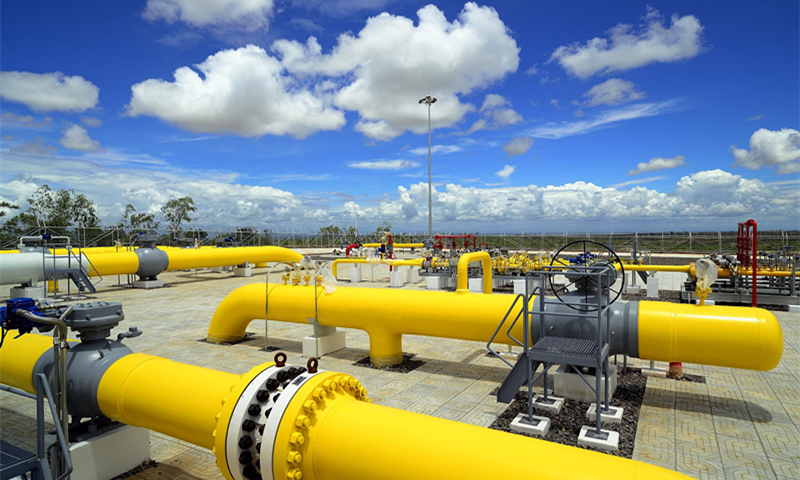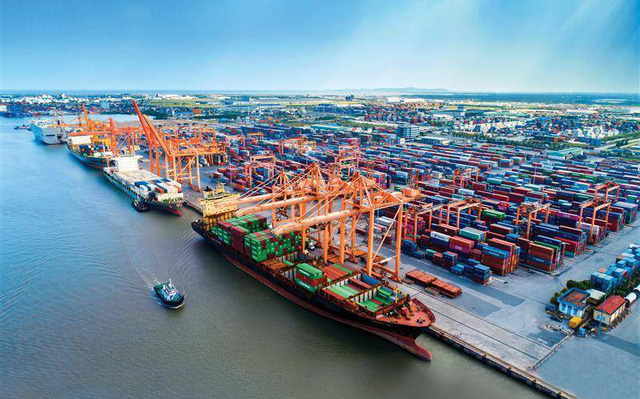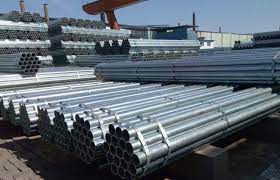Closing the session on June 30, oil prices fell about 3%, gold had its biggest quarterly drop in more than a year, copper had its biggest quarterly drop since 2011, rice and cereals all fell.
Oil down 3%
Oil prices fell about 3% as OPEC+ confirmed it would only increase output in August as previously announced despite tight global supply.
Closing the session on June 30, Brent crude oil futures in September fell by $3.42, or 3%, to $109.03 per barrel. The August contract expiring this session fell $1.45, or 1.3%, to $114.81 a barrel. WTI crude fell $4.02, or 3.7%, to $105.76 a barrel.
The Organization of OPEC+ Producers, which includes Russia, agreed to maintain its output strategy after two days of meetings. Previously, OPEC + decided to increase production per month by 648,000 bpd in July and August.
Russia’s oil sanctions since the Russia-Ukraine conflict have sent energy prices soaring, fueling fears of inflation and recession.
During the session oil prices fell along with Wall Street. The S&P 500 index posted its worst first six months of the year since 1970, on concerns that central banks’ determination to rein in inflation would hurt economic growth.
But supply disruptions could limit downside momentum as Libya halts exports from two eastern ports while Ecuador’s output falls because of ongoing protests.
Gold has the biggest quarterly loss in more than a year
Gold prices fell, recording their worst quarter in five quarters due to tough policy from global central banks.
Spot gold fell 0.6 percent to $1,806.55 an ounce, down more than 6% for the quarter as a whole. US gold for August futures closed down 0.6% at $1,807.3 an ounce.
The dollar index is near a two-decade high and is up 6% this quarter, making gold more expensive for buyers in other currencies.
Gold prices rebounded briefly after US data showed a 6.3% increase in the personal consumption expenditures index (CPI) in May. However, gold prices quickly returned to volatility within a narrow range like seen in the last few sessions.
Copper had the biggest quarterly loss since 2011
Copper prices fell in the last session of the month, recording their biggest quarterly loss since 2011 as the Covid-19 lockdown in China and slowing economic growth curbed demand.
Other industrial metals also had their worst quarters in years, falling between 20% and 40%.
Many analysts fear further declines in the short term, as central banks raise interest rates rapidly, will stifle growth.
Three-month copper on the London Metal Exchange (LME) fell 1.6% to $8,265.5 a tonne, down 20.3% since the start of April.
Copper prices fell 19.8% in the first quarter of 2020 due to the global spread of Covid-19.
Commerzbank analyst Daniel Briesemann expects copper prices to fall to between $7,000 and $7,500 in the third quarter, but prices will pick up later in the year.
The dollar had its biggest quarterly gain since 2016, making the metals more expensive for buyers in other currencies.
China’s manufacturing activity increased slightly in June after 3 months of decline due to the Covid blockade.
Iron ore decrease
Iron ore prices in Dalian and Singapore fell and for the quarter fell as a result of lingering concerns about demand for the steelmaking component in China, the world’s top steel producer.
On the Dalian Commodity Exchange, September iron ore futures closed down 2.2% at CNY 791/ton after four consecutive gains, the whole quarter fell more than 10%.
In Singapore, the July iron ore contract fell 1.5% to $120.9 a tonne and marked the third consecutive month of decline.
Dalian iron ore prices hit a year-to-date high of 948 yuan per tonne on June 6, while iron ore in Singapore rose to $168.65 a tonne on March 8, supported by additional stimulus. complement the Chinese economy.
On the spot market, China’s 62% Fe iron ore traded at $124 a tonne on June 29, according to SteelHome data, down 24% this year from a peak of 163 USD/ton achieved on 7/3.
The zero-Covid policy and unfavorable weather for construction activity have weighed on the steel market in recent weeks, along with fading hopes for further economic support.
Bar steel price in Shanghai increased by 0.2%, hot rolled coil was stable. Stainless steel rose 1.3%.
Japanese rubber fell
Rubber prices in Japan fell on the trend of Thai raw material prices and Tokyo shares fell, despite strong Chinese auto sales and more upbeat data from the country’s manufacturing and services sectors. This has limited the downward momentum.
December rubber contract on the Osaka exchange closed down 2 JPY or 0.8% to 257.4 JPY ($1.89)/kg, the biggest one-day drop in percentage terms since June 14.
Thai rubber latex price dropped to the lowest level since January 12 at 42.75 baht ($1.21)/kg on June 29.
Japanese stocks fell more than 1.5% after data showed monthly industrial output fell by the most in two years and the yen fell to a 24-year low, stoking recession fears.
At the Shanghai trading floor, rubber for September delivery increased by 10 CNY to 12,875 CNY (US$1,923.74)/ton.
Coffee goes the opposite way
September Arabica coffee futures closed up 1.85 US cents, or 0.8%, to $2,301/lb, after gaining 4.8% in the previous session.
Dealers note that stocks of ICE-certified coffee are falling to a 22-year low, a sign of short-term supply shortages and concerns that dry weather in Brazil could lead to lower output.
September robusta coffee futures fell $16 or 0.8% to $2,033 a tonne.
Coffee prices in Vietnam increased this week due to tight supplies at the end of the season, stronger USD and declining stocks in Indonesia.
Farmers in the Central Highlands, the country’s largest coffee-growing province, sold coffee at VND42,000-44,000 ($1.82-1.89)/kg, up from VND42,700-43,700 last week.
A trader said that domestic prices reached 2016-2017 levels, but due to the increase in exchange rate and production costs, profits are not as high as before, prices may increase following exchange rate movements.
Traders in Vietnam have offered to sell grade 2 robusta coffee with 5% black and broken beans at a discount of $150-$160/ton compared to September futures in London, a week ago the deduction was 140 – 160 USD/ton.
Coffee exports from Vietnam are estimated to increase by 21.7% in the first 6 months of this year compared to the same period last year, reaching 1.03 million tons, equivalent to 17.2 million bags of 60 kg/bag.
In Indonesia, Sumatra’s robusta coffee exports increased by 27.26% in May compared with the same month last year, to 12,047.93 tons.
The price of Sumatra Robusta coffee compared to the July futures contract in London was unchanged from last week, at a minus 140-150 USD/ton.
Bull Road
Raw sugar for July delivery, due this session, rose 0.28 US cents or 1.5% to 18.83 US cents/lb, a one-week high.
Spot demand is good even after India exports heavily this season.
White sugar for August futures closed up $2.8 or 0.5% to $556.6/ton
Rice prices fall in Thailand, Vietnam
Demand for Indian rice was strong this week as a weaker rupee made the rice more attractive compared to Thai and Vietnamese rice, while Bangladesh cut import duties to lower domestic prices.
Bangladesh reduces import tax on rice to 25% from 62.5%, large volumes will be imported from neighboring India. The floods have damaged much of the crop and sent prices in the country spike, despite now being the peak of the country’s biggest harvest.
While Bangladesh is the world’s third largest rice producer, it often requires imports to cope with shortages caused by natural disasters such as cyclones and floods.
India’s 5% broken parboiled rice was offered at $355 to $360/ton unchanged from last week.
The price of Thai 5% broken rice dropped to $412-415/ton from $420-425/ton a week ago. Farmers expect good yields this year, they are pressured from higher fertilizer costs.
Vietnam’s 5% broken rice sold at $415-420/ton compared to $418-423/ton a week ago. A trader in Ho Chi Minh City said domestic supply is increasing with more output from the ongoing summer-autumn harvest.
Vietnam’s rice exports in the first 6 months of this year were estimated to increase by 16.2% over the same period last year, reaching 3.5 million tons, with a turnover of 4.6%.
Grains fall after USDA data
Soybeans closed lower as estimates of US plantings were smaller than expected and tight stocks were dwarfed by economic concerns as stock and energy markets retreated.
Soybean prices rose after the USDA Department of Agriculture said U.S. farmers planted less this year than market analysts had forecast.
Corn and soybeans hit multi-month lows as grain stocks in the USDA’s quarterly report matched forecasts and crops exceeded estimates.
August soybeans on the Chicago Board of Trade closed down 11 US cents to $15.68 per bushel while new November soybeans fell 20-1/4 US cents to $14.58 per bushel.
Corn for September futures fell 35-1/4 US cents to 6.28-3/4 USD/bushel, new-crop corn for December fell 34 US cents to 6.19-3/4 USD/bushel. Both closed at their lowest levels since early March.
Wheat futures for September fell 46 US cents to $8.84 per bushel, the lowest in four months.
T&G Import-Export Joint Stock Company
Address: 352 Hue Street, Le Dai Hanh Ward, Hai Ba Trung District, Hanoi
Hotline: 02473010868
Email: hrm@tginterjsc.com
Website: http://tgimportexport.com





